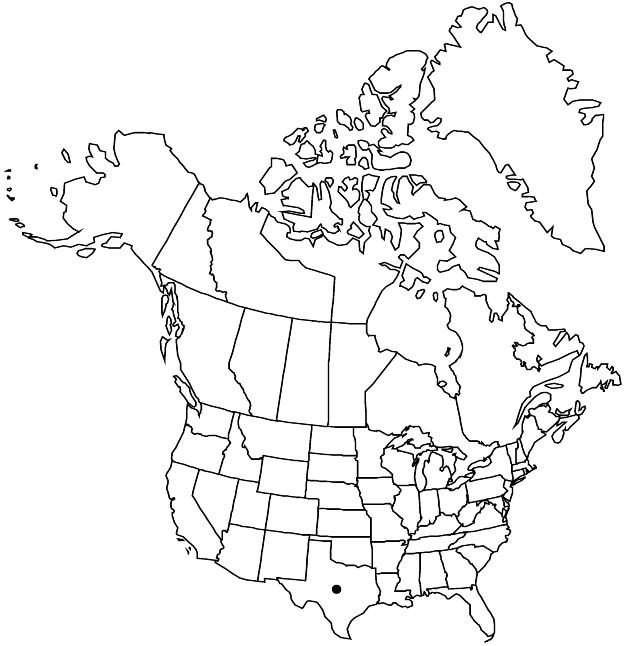Herbs or shrubs, 0.2[–1.5] m, hairs simple, glandular hairs microcapitate. Leaves not aromatic; petiole 3–4 mm, with 2 apical nectaries; blade narrowly ovate or elliptic, 19–31 × 5–9 mm, base cuneate or attenuate, margins not revolute, serrulate, apex acute, surfaces pilose. Inflorescences epiphyllous, 2 cm; peduncle adnate to petiole; prophylls inserted at receptacle base, lanceolate or subulate, 6–7 × 0.5–1 mm, without nectaries. Flowers distylous; calyx 15 mm, tube 6.5 mm; petals white, sometimes veins purple at base, 15 × 10 mm; proximal part of filaments adnate along margins to floral tube forming 5 nectar pockets, 6 mm in long-styled flowers, 10 mm in short-styled flowers; anthers basifixed; styles 7 mm in long-styled flowers, 5 mm in short-styled flowers. Capsules globose, 2–4 mm, verrucose. Seeds blackish, 2 × 1 mm; epidermis smooth; aril unilateral, 1.5 mm. 2n = 10, 20.
Phenology: Flowering and fruiting Feb.
Habitat: Sunny, open places, dry or humid, often on rocky or sandy soil
Elevation: 0–10 m
Distribution

Tex., Mexico, South America (Bolivia, Brazil, Guyana).
Discussion
Variety coerulea was collected once near Rockport, Aransas County; perhaps it has not persisted.
Selected References
None.